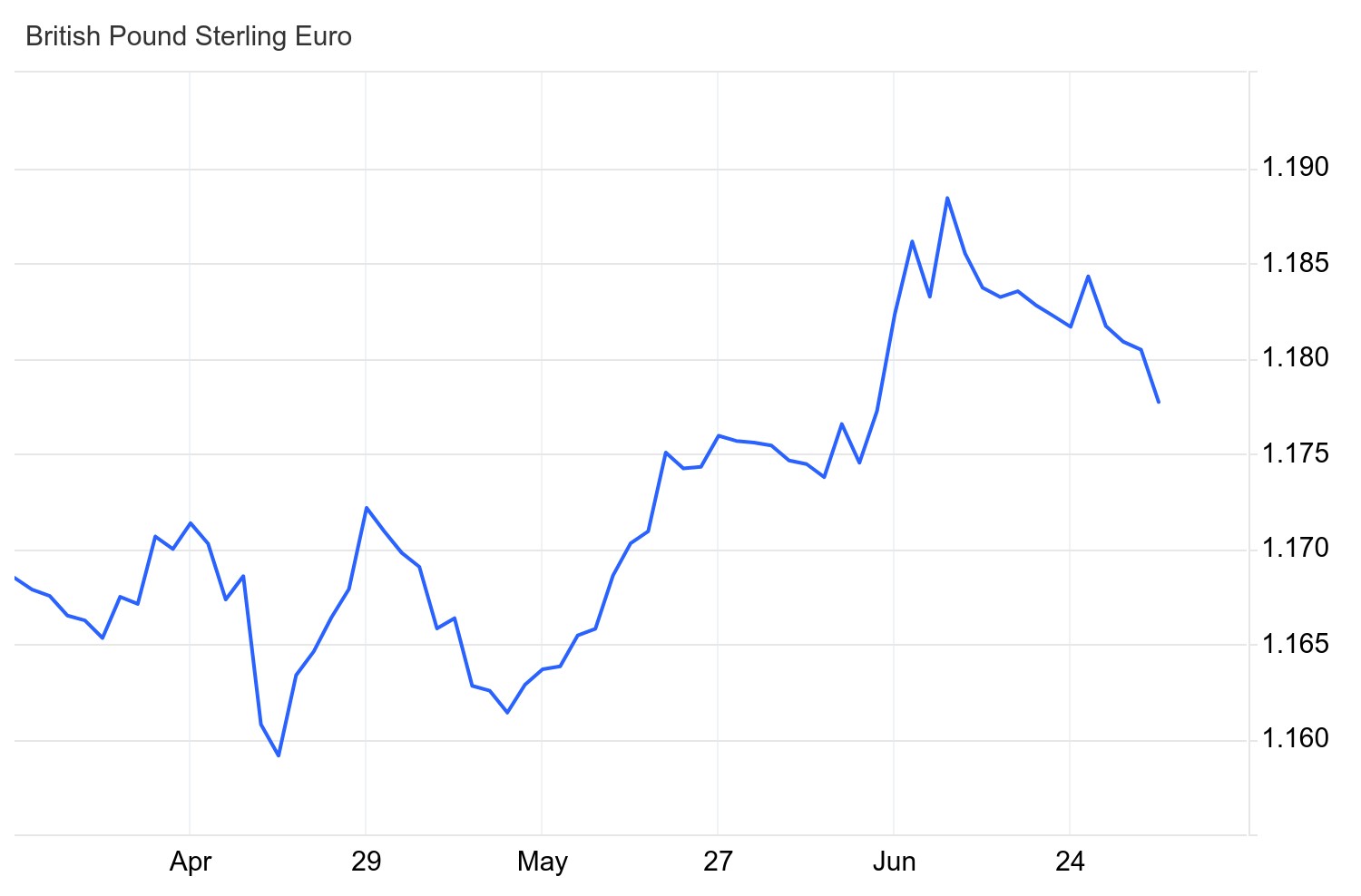GBP-EUR Exchange rate hits 22-month high in June
The pound euro exchange rate edged lower on 6 June following the European Central Bank’s (ECB) interest rate decision. While it cut rates by 25bps as promised, its accompanying press release reiterated that a data-driven approach to future decisions was required. Furthermore, it refused to commit to a clear pathway for monetary policy unwinding.
The pair recovered to a nine-day high around 1.177 after the latest US non-farm payrolls report landed on 7 June. In May, the US economy added 272,000 jobs, smashing the expected figure of 185,000, which slashed the odds for a July interest rate cut from 20% to around 8%.
The dollar’s subsequent appreciation weighed on the euro due to its negative correlation with the US currency. Additionally, the revised Fed rate cut bets increased the potential for widening monetary policy divergence between the ECB, the Fed, and the Bank of England (BoE).
The pound jumped above the 1.18 benchmark against the dollar on 9 June after euro investors were spooked by French president Emmanuel Macron’s announcement of a snap election – a move made against a backdrop of far-right political traction across the EU.
The pound retreated from a 22-month high in the 1.18 mid-range on 12 June amid shifting Fed rate cut bets that were prompted by an unexpected drop in US inflation. As investors ramped up their expectations of a cut this summer the dollar came under pressure, which lifted the euro.
The pound euro rate hit a fresh 22-month high just shy of 1.19 on 14 June amid political instability in the EU after the European elections resulted in gains for far-right Eurosceptic parties. This amplified the uncertainty surrounding the decision to call a snap election in France.
Having dipped towards 1.18 on 16 June, the pair was subdued until the UK Consumer Price Index (CPI) hit the headlines. While headline inflation cooled to the BoE’s 2% target in May, signs of sticky services inflation lifted the pound back into the 1.18 mid-range on 19 June.
The BoE’s June interest rate decision came hot on the heels of the CPI, with the central bank enacting a widely anticipated interest rate hold accompanied by dovish forward guidance. This together with falling inflation data saw BoE rate cut speculation intensify, which undermined the pound – eroding its gains.
The pound euro rate meandered through a narrow range just above 1.18 for a few days against a turbulent economic backdrop: waning German consumer confidence, declining economic morale in the Eurozone, and news of a cooling UK labour market.
There was some economic cheer for the pound on 28 June following a better-than-forecast GDP print in the UK, which showed the economy climbed out of recession at a faster pace than projected throughout the first quarter.
The pound euro rate dropped below 1.18 to a three-week low on 30 June as the first round in France’s legislative election showed that support for the far-right National Rally party was weaker than expected, tempering fears of a majority right-wing government.
The pair ended the month at 1.178.
GBPEUR: 3-Month Chart

Looking ahead
The next BoE policy meeting doesn’t take place until August, so investor attention will be focused on the CPI for June on 17 July.
Influential data from the UK economy in July: Gross Domestic Product (11 July), Consumer Price Index (17 July), ILO Unemployment Rate (18 July), Retail Sales (19 July), S&P Global/CIPS Composite (23 July).
Having delivered on its rate cut pledge in June, the ECB’s July meeting is considered less of a done deal following the central bank’s hawkish forward guidance after its last policy meeting.






